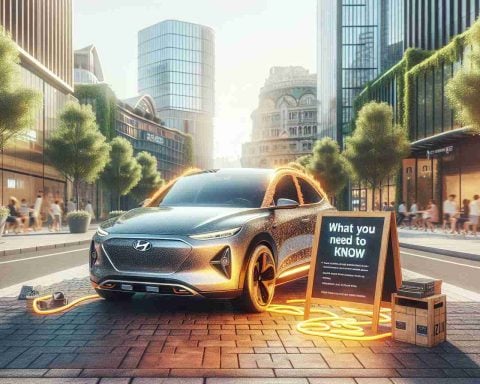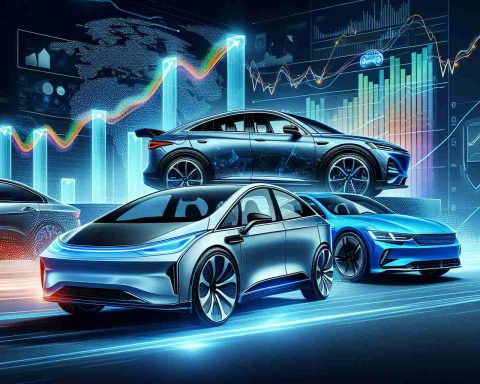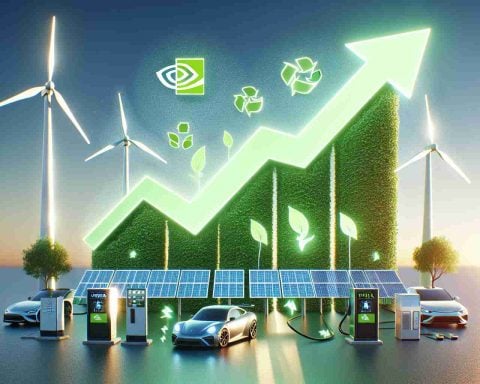- The Hyundai Ioniq 5 boasts a conquest rate of 74.2%, leading among mainstream electric vehicles.
- Its appeal lies in its futuristic design, impressive range, and solid performance, especially for lease customers.
- Conversely, Toyota’s bZ4x faces challenges in attracting new buyers, even with price reductions.
- Volkswagen’s leasing strategy for the ID.3 in Europe demonstrates the effectiveness of competitive pricing.
- The EV market requires adaptability and a strong value proposition to succeed, as shown by Hyundai’s rise and challenges faced by others like Hertz and Nissan.
In a world where most people buy cars bigger than they need, the electric vehicle (EV) buyer stands out as remarkably rational. As automakers vie for customer attention, a surprising leader has emerged in the conquest game: the Hyundai Ioniq 5. This futuristic-looking machine, with its refreshing design and impressive range, has captivated buyers from other brands. It boasts a conquest rate of 74.2%, making it the top choice among mainstream EVs.
What makes the Ioniq 5 so alluring? Perhaps it’s the striking aesthetics that whisper a promise of tomorrow, or the satisfying performance that makes you forget you’re driving an EV. Its value proposition also stands out, especially for those who choose to lease. As Hyundai captures the hearts of these newcomers, it’s carving out a space in the competitive landscape.
At the other end, Toyota’s bZ4x struggles to attract new customers despite a hefty price cut. Buyers seem indifferent to Toyota’s first North American EV, focusing instead on Toyota’s loyalists or bargain-seekers looking for cheap leases.
Meanwhile, Volkswagen discovered the value of pricing with its ID.3 in Europe, finding eager buyers with an enticing leasing campaign. The strategy highlights that a sweet price can move even the most reluctant customer towards embracing the electric future.
While Hyundai rides its wave of success, others like Hertz and Nissan feel the strain of missteps—Hertz with its gamble on an unrentable EV fleet, and Nissan facing the harsh reality of plant closures. The lesson is clear: in the evolving landscape of electric vehicles, adaptability and the right allure can lead to triumph, while imprudence goes punished.
Discover Why the Hyundai Ioniq 5 is Dominating the Electric Vehicle Market
How-To Steps & Life Hacks
To maximize the benefits of owning a Hyundai Ioniq 5, consider following these steps:
1. Leverage Incentives: Check for federal and state incentives, rebates, or tax credits for purchasing an electric vehicle. Resources like the U.S. Department of Energy can provide detailed information.
2. Plan Charging Points: Install a home EV charging station for convenience and take advantage of public charging networks. Apps like PlugShare or ChargePoint can help locate charging stations.
3. Optimize Driving Habits: Learn how to maximize your EV’s range by utilizing regenerative braking, maintaining optimal driving speeds, and keeping unnecessary load off the car.
Real-World Use Cases
The Ioniq 5, with its spacious interior and adaptable configurations, is perfect for:
– Families: Ample space for passengers and cargo.
– Tech Enthusiasts: Advanced technology features, including augmented reality (AR) navigation.
– Environmentally Conscious Consumers: Zero tailpipe emissions contribute to a reduced carbon footprint.
Market Forecasts & Industry Trends
The EV market is poised for continued growth as governments worldwide push for cleaner transportation. According to BloombergNEF, electric cars will make up 28% of global passenger vehicle sales by 2030. The Ioniq 5 aligns well with these trends, thanks to its competitive pricing and high-quality features.
Reviews & Comparisons
– Hyundai Ioniq 5: Praised for its retro-futuristic design, spacious interior, and impressive range.
– Toyota bZ4x: Criticized for its lackluster range and conventional design.
– Volkswagen ID.3: Receives positive feedback for its smart use of interior space and pricing strategy.
Controversies & Limitations
While the Ioniq 5 is mostly lauded, there are some critiques, such as:
– Charging Network: Hyundai is working to expand partnerships with charging networks; however, it’s crucial to verify accessibility in your region.
Features, Specs & Pricing
– Range: Up to 300 miles on a full charge.
– Performance: Dual-motor AWD variant accelerates from 0-60 mph in roughly 5.2 seconds.
– Pricing: Starts at approximately $40,000 but varies with configuration and optional features.
Security & Sustainability
– Safety Features: Hyundai offers advanced safety systems, including forward-collision avoidance and lane-keeping assistance.
– Sustainability: Utilizes eco-friendly materials in the interior, showcasing Hyundai’s commitment to sustainability.
Insights & Predictions
Industry experts predict Hyundai’s strategy of combining style with performance and affordability will solidify its position in the EV market. Electric vehicles are expected to gain a broader appeal as charging infrastructure improves and battery technology advances.
Tutorials & Compatibility
Compatibility issues are minimal, as the Ioniq 5 supports most standard charging networks and is compatible with various mobile apps for enhanced features.
Pros & Cons Overview
– Pros: Eye-catching design, excellent range, advanced tech features, and competitive pricing.
– Cons: Charging network coverage may vary regionally.
Actionable Recommendations
– Test Drive: Experience the Ioniq 5 firsthand at a local dealership.
– Research Incentives: Maximize cost savings by exploring available rebates and incentives.
– Join EV Communities: Engage with online forums and local groups for shared insights and tips.
For more information about electric vehicles and Hyundai’s offerings, visit the official Hyundai website.



















